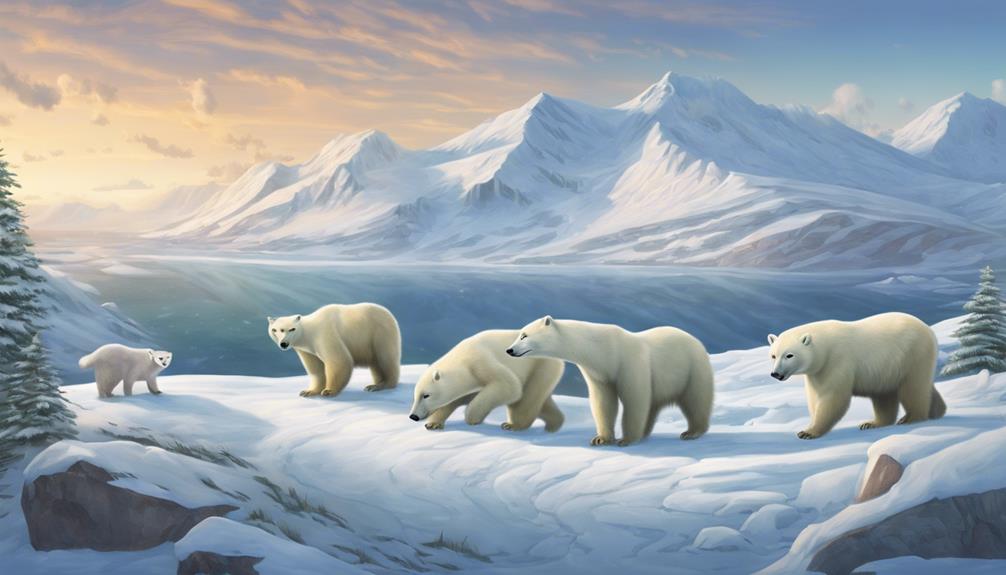As you stumble upon the vast expanse of the tundra, you may find yourself captivated by the silent resilience of its inhabitants. From the majestic polar bears to the elusive Arctic foxes, these creatures have honed their skills to navigate the unforgiving icy terrain.
But what about the lesser-known species that thrive in this harsh environment? Stay tuned to uncover fascinating facts about their unique adaptations, survival strategies, and the intricate web of life that sustains them.
Get ready to witness the extraordinary world of tundra animals come to life before your eyes.
Tundra Animal Diversity
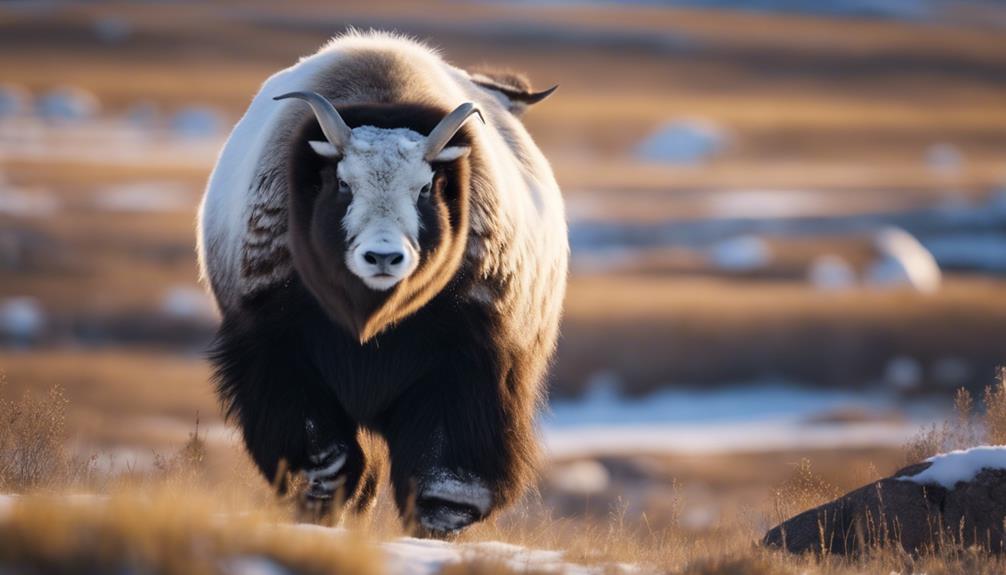
The tundra biome boasts a diverse array of animals including mammals, birds, and aquatic species, each uniquely adapted to survive in its harsh environment. Mammals like the iconic polar bear and Arctic fox are well-known inhabitants, sporting thick fur for insulation against the cold. Birds such as snowy owls and ptarmigans are skilled flyers, finding their way through the vast tundra expanses. Aquatic species like seals and beluga whales thrive along the icy coastlines, with specialized adaptations for swimming in frigid waters.
These animals exhibit remarkable behaviors and interactions within the tundra ecosystem. From the musk oxen’s protective herds to the lemmings’ cyclical population explosions, each species plays a vital role in the delicate balance of this unforgiving landscape. Migration patterns, hibernation strategies, and unique feeding habits further showcase the resilience and resourcefulness of tundra animals in the face of extreme conditions.
As you explore the tundra biome, you’ll witness firsthand the remarkable diversity and intricate adaptations that allow these animals to not just survive, but thrive in one of the harshest environments on Earth.
Adaptations for Harsh Climate
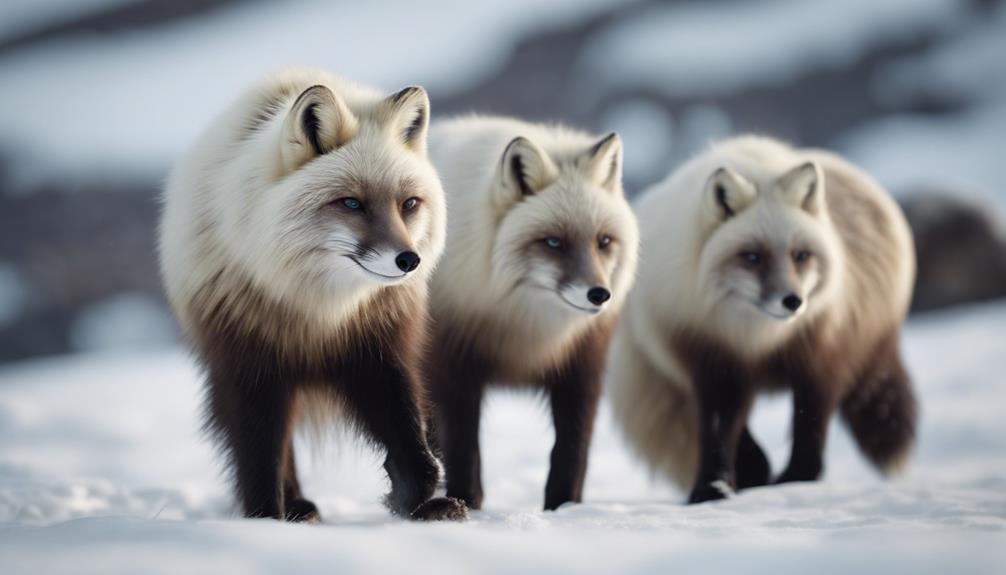
As you explore the diverse array of tundra animals and their unique adaptations for survival, you’ll witness how these creatures have evolved remarkable strategies to endure the harsh climate of their icy habitat.
One key adaptation is the thick fur that provides insulation against the biting cold. This fur not only traps heat close to the body but also helps in camouflaging with the snowy surroundings, aiding in evading predators or ambushing prey.
Additionally, tundra animals have developed extra layers of fat to store energy and keep warm during the long, frigid winters. Their large bodies with short limbs help minimize heat loss, while some species have specialized behaviors like huddling together for warmth.
These adaptations collectively enable tundra animals to thrive in extreme cold conditions, showcasing their remarkable resilience in the face of the unforgiving tundra environment.
Locomotion Strategies in Snow
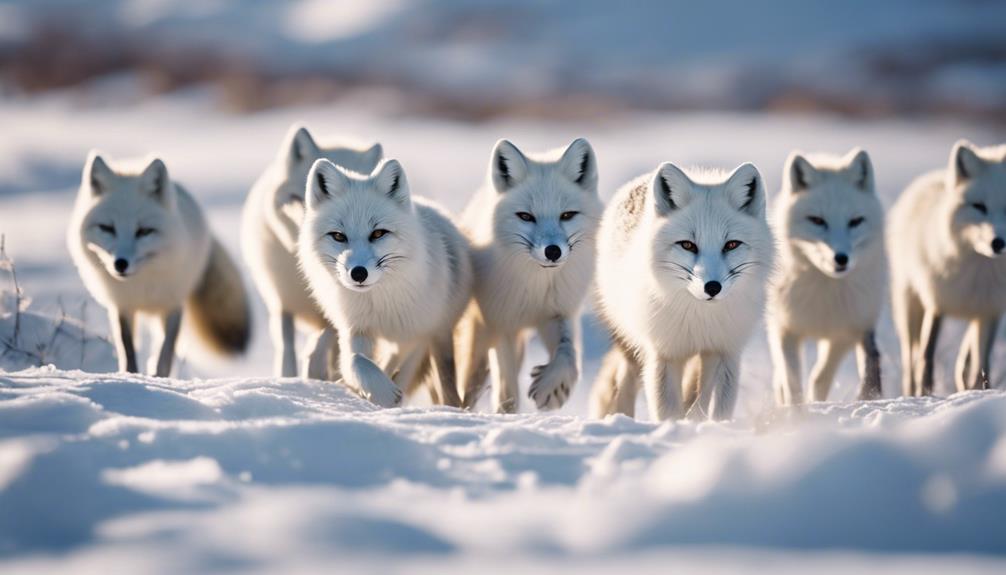
Roaming through the snow-covered terrain, tundra animals employ specialized strategies for efficient locomotion in their icy habitat. To navigate the challenging snow conditions, these animals have developed unique adaptations.
Some species, like the Arctic fox, use their furry paws to distribute their weight evenly, preventing them from sinking deep into the snow. Others, such as the snowshoe hare, have evolved large hind feet that act as natural snowshoes, allowing them to hop on top of the snow effortlessly. Caribou possess wide hooves that provide stability and act like snowshoes, aiding in traversing the snow-covered landscape.
Additionally, animals like the musk ox use their strong legs to plow through snowdrifts, while the stoat utilizes a bounding technique to move swiftly across the snow. These locomotion strategies are important for tundra animals to conserve energy and reach food sources in the harsh winter environment. By adapting their movements to the snow, these resilient creatures secure their survival in the unforgiving tundra.
Camouflage Techniques
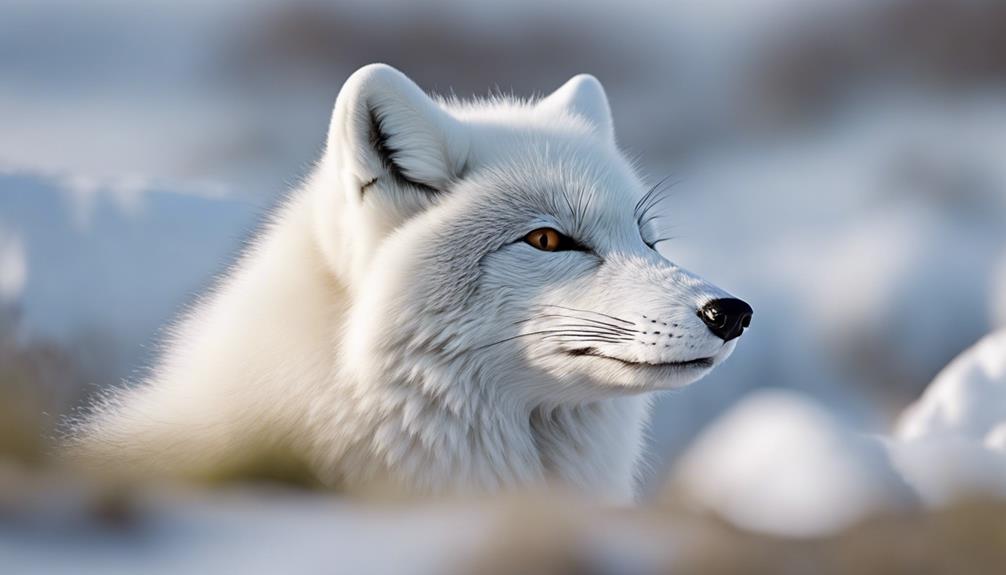
Roaming the snow-covered landscape, tundra animals employ various camouflage techniques to blend seamlessly with their icy surroundings for survival. White fur is a common adaptation, allowing creatures like Arctic foxes and snowy owls to hide from both predators and prey.
Some animals, such as the Arctic hare, change color with the seasons, shifting from brown in summer to white in winter for effective camouflage. This coloration adjustment helps them evade detection against the snow or rocky terrain. Additionally, creatures like the ptarmigan molt their feathers to match the changing landscape, ensuring their concealment.
The mastery of blending in is essential for tundra animals to avoid predators and sneak up on their own prey successfully. Through these camouflage strategies, tundra animals enhance their chances of survival in the harsh and unforgiving Arctic environment.
Food Chain Dynamics
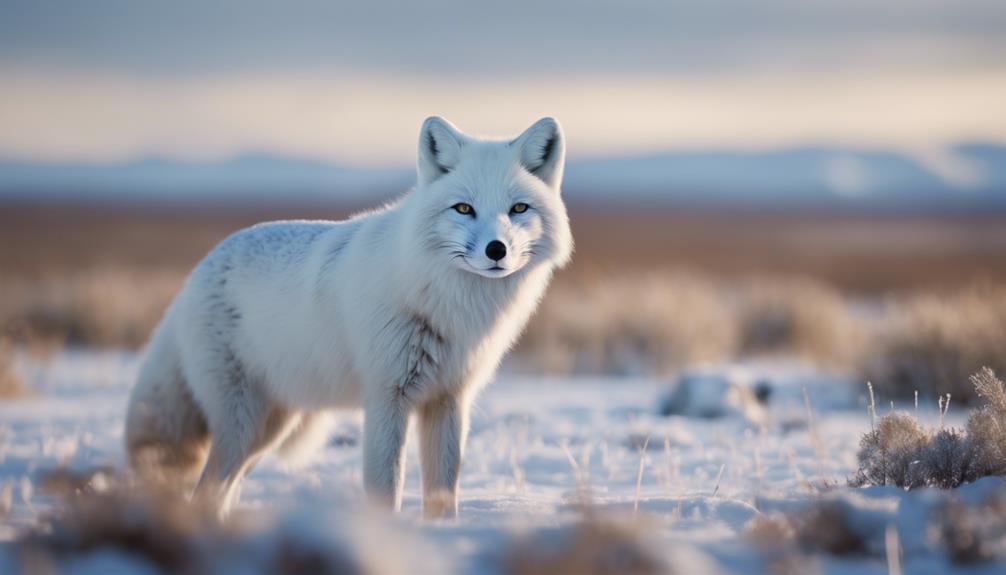
In the tundra biome, the intricate dynamics of the food chain play a important role in the survival and balance of its ecosystem. The food chain in the tundra is a delicate web where each organism, from the smallest plants to the top predators, plays a important role.
At the base of the food chain are primary producers like lichens, mosses, and grasses that are adapted to survive in the harsh conditions. These plants are consumed by herbivores such as lemmings, voles, and caribou, which in turn become prey for carnivores like arctic foxes, wolves, and polar bears.
The tundra food chain is characterized by high competition for limited resources, especially during the long winter months when food scarcity is a significant challenge. This scarcity drives animals to adapt their hunting or foraging strategies to survive.
Understanding the dynamics of the food chain is essential for conservation efforts to protect the delicate balance of tundra ecosystems and the diverse species that rely on them.
Hibernation and Migration Patterns
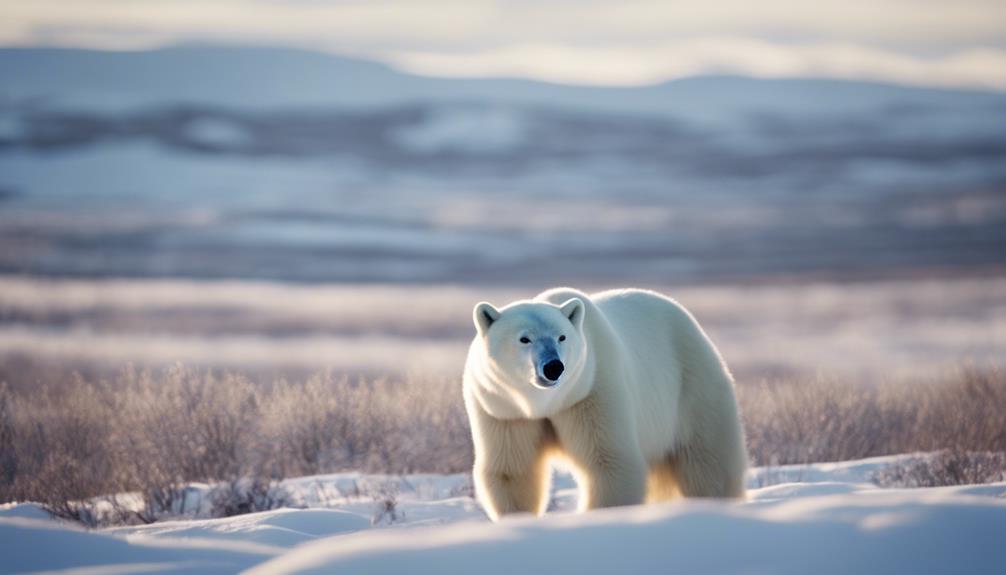
During the harsh winters of the tundra biome, hibernation and migration become essential survival strategies for its diverse animal inhabitants. Many tundra animals, like bears, arctic squirrels, and marmots, choose to hibernate through the cold months. By lowering their metabolic rate and entering a state of dormancy, these animals conserve energy when food is scarce. Burrowing animals such as lemmings and stoats also use hibernation to survive the harsh conditions.
In addition to hibernation, seasonal migration is a common behavior among tundra species. Birds like snow buntings and waterfowl travel to warmer regions to find food and escape the extreme cold. Caribou undertake long journeys in search of suitable grazing grounds. Migration allows these animals to access resources that are otherwise unavailable in the frozen tundra landscape. By alternating between hibernation and migration, tundra animals have evolved effective strategies to endure the challenging winter months.
Conservation of Tundra Species
Conservation initiatives play an important role in safeguarding tundra animals. Measures such as establishing protected areas, enforcing wildlife protection laws, promoting sustainable practices, and raising awareness about the importance of preserving tundra habitats are crucial. Collaborative efforts involving governments, conservation organizations, local communities, and researchers are essential for effective conservation strategies.
Notable Tundra Animals
The musk ox, with its massive build and thick coat, survives the freezing temperatures and fierce winds of the tundra. Caribou, or reindeer, undertake one of the longest migrations of any land mammal, moving in search of food and suitable breeding grounds.
The snowy owl, a master of camouflage with its white plumage, preys on small mammals in the tundra. Finally, the polar bear, the largest land predator, relies on sea ice to hunt seals and navigate its icy habitat. These notable tundra animals exemplify the adaptability and resilience required to thrive in some of the planet’s harshest environments.

Erzsebet Frey (Eli Frey) is an ecologist and online entrepreneur with a Master of Science in Ecology from the University of Belgrade. Originally from Serbia, she has lived in Sri Lanka since 2017. Eli has worked internationally in countries like Oman, Brazil, Germany, and Sri Lanka. In 2018, she expanded into SEO and blogging, completing courses from UC Davis and Edinburgh. Eli has founded multiple websites focused on biology, ecology, environmental science, sustainable and simple living, and outdoor activities. She enjoys creating nature and simple living videos on YouTube and participates in speleology, diving, and hiking.
🌿 Explore the Wild Side!
Discover eBooks, guides, templates and stylish wildlife-themed T-shirts, notebooks, scrunchies, bandanas, and tote bags. Perfect for nature lovers and wildlife enthusiasts!
Visit My Shop →
